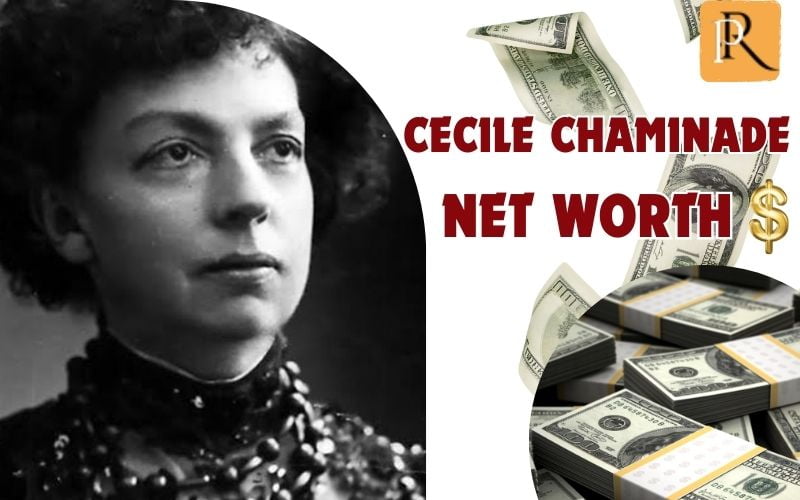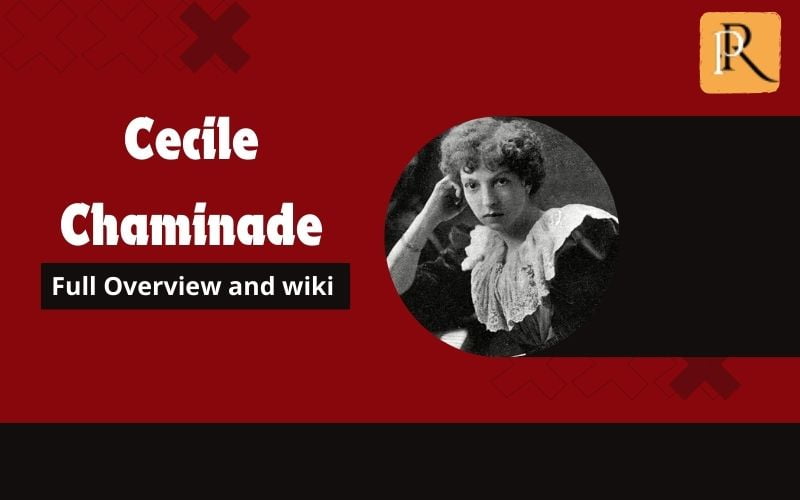Have you ever wondered Cecile Chaminade’s net worth? As one of the famous classical pianists, her talent has spread throughout the ages. Today, we dive into what makes Cécile’s work so timeless and how it has translated into her net worth. Follow along as we explore the echoes of her melodic past.
Quick information
| TRUTH | DETAIL |
|---|---|
| Real name | Cécile Louise Stéphanie Chaminade |
| Popular name | Cécile Chaminade |
| Sex | Female |
| Date of birth | August 8, 1857 – April 13, 1944 |
| Age at death | eighty six |
| Parents | Hippolyte Chaminade |
| Siblings | Henriette Chaminade |
| Place of birth | Paris, France |
| Nationality | French |
| Nation | do not apply |
| Education | Private tutoring, not attending the Conservatory |
| Marital status | Married |
| Sexual orientation | do not apply |
| Wife/Wife/husband | Louis-Mathieu Carbonel |
| Children | Do not have |
| Dating | do not apply |
| Net value | do not apply |
| Origin of wealth | Composing, performing, and teaching music |
| Year of operation | do not apply |
| Category | do not apply |
| Height | do not apply |
What is Cécile Chaminade’s net worth in 2024?

Comparing Cécile Chaminade’s net worth to contemporary musicians such as Bengt Forsberg and Amy Beach highlights the historic financial challenges faced by female composers.
Although exact figures for Chaminade’s net worth are not recorded, her income through composing and performing music in the late 19th and early 20th centuries was substantial but possibly are priced lower than their male counterparts.
Bengt Forsberg, known for his piano accompaniment and collaboration, and Amy Beach, the pioneering American female composer, both experienced similar challenges but were more readily acknowledged in discussions. Modern discussion of the financial legacies of composers.
Cécile Chaminade Full Overview and Wiki

Early start
Cécile Chaminade’s early experiences with music laid the foundation for her flourishing career. She received her first piano lessons from her mother and was highly regarded by Félix Le Couppey from the Paris Conservatoire.
Although she was recommended to take formal music lessons, her father objected due to the social norms of the time, only allowing her to take private music lessons. Her teachers included some of the most respected names from the Conservatory, which profoundly shaped her early musical development.
Salon performance and early recognition
Chaminade’s career was marked by her first salon performances, starting in 1878, where she played only her own works. This approach not only showcased her dual talents as both a composer and performer but also began to establish her reputation within the music community.
Her works during this period were well received, earning her a place in many prestigious musical circles, including the Société Nationale de Musique.
Expanding influence in Europe and the UK
By the end of the 19th century, Chaminade’s reputation had spread beyond France. By 1892, she debuted in England, where her compositions were received with great enthusiasm.
Throughout the 1890s, she returned to England several times, performing at famous venues such as the Aeolian Hall in London and even attracting the attention of Queen Victoria, a famous admirer of the music. hers.
Marital and personal challenges
In 1901, Chaminade married music publisher Louis-Mathieu Carbonel. The marriage, said to be a marriage of convenience, had strict conditions, including living apart. This arrangement lasted until Carbonel’s death in 1907, after which Chaminade never remarried.
Her personal life, filled with unconventional choices, mirrors her professional path in breaking down traditional boundaries.
Tour of America and expand audience
Chaminade’s influence peaked when she toured the United States in 1908, performing in 12 cities.
Her compositions, such as scarf dance And Ballet No. 1, became extremely popular in the US, further cementing her international reputation. This period marked the peak of her career, as her music became a staple in many American households.
Honor and later years
Throughout his career, Chaminade received many honors, both in France and internationally. She was awarded the French Légion d’Honneur in 1913, becoming the first female composer to receive this award.
Her final years saw a decline in her writing, but her earlier works continued to be celebrated. Chaminade died in 1944, leaving behind a legacy that redefined the role of women in music and expanded the scope of women’s achievements in the arts.
Personal life
Cécile Chaminade married Louis-Mathieu Carbonel in 1901. Carbonel was a music publisher in Marseille. Their marriage was somewhat unusual; it is speculated that it was more like a marriage of convenience.
The terms of their marriage were quite strict, stipulating that they would live separately – Carbonel in Marseille and Chaminade near Paris – and that their marriage would remain platonic. Unfortunately, Carbonel passed away in 1907 due to lung disease. After his death, Chaminade never remarried.
Cécile Chaminade has no children.
Social media accounts
- Facebook: Not applicable
- Twitter: Not applicable
- Instagram: Not applicable
- YouTube: Not applicable
Frequently asked questions about Cécile Chaminade

Who is Cécile Chaminade?
She is a French composer and pianist, known for her piano works and concert tours throughout Europe and the United States.
What are some of Chaminade’s most notable compositions?
Her compositions include Flute Concertino, Op. 107, Concertstück for piano and orchestra, and many piano miniatures and songs.
Has she received any prestigious awards?
That’s right, she was the first female composer to be awarded the Légion d’Honneur, France’s highest honor, in 1913.
What is unique about Chaminade’s musical style?
Her music is often noted for its lyrical tone and charm, reflecting the feminine qualities praised during her time. She is also known for incorporating Spanish elements into her music.
How has Chaminade’s career impacted women in music?
She was a pioneering figure for women in music, with Chaminade clubs in the United States dedicated to performing her works and promoting female composers.
What challenges have you encountered in your career?
Despite her success, she still faces criticism for her music being too feminine or conversely, too masculine. She also struggled with the lack of a formal conservatory education, which made her unhappy at the time.
How is Chaminade’s music received in the United States?
She is extremely popular in the United States, where she tours and has many dedicated fan clubs.
Did she record any of her compositions?
Yes, she recorded some of her works on piano rolls and gramophones, which are still prized by collectors to this day.
What is Chaminade’s personal life like?
She married music publisher Louis-Mathieu Carbonel in a marriage of convenience. They never lived together and he accompanied her on her travels to provide safer accommodations.
How did she manage her compositions financially?
She was a shrewd businesswoman who profited from piano arrangements of her larger works, such as ballet scores, selling them as individual works.
Did she have any early mentors or supporters?
That’s right, famous composer Georges Bizet was a family friend who encouraged her to study music from an early age.
What happened to Chaminade’s legacy after her death?
Chaminade’s music, once very popular, faced a decline in recognition after her death, although renewed interest has emerged in recent years.
Conclusion
Reflecting on Cécile Chaminade’s journey offers more than just a glimpse into her net worth; it opens the door to her lasting influence on classical music. Her compositions, despite being centuries old, continue to inspire and resonate with audiences and artists alike.
Discover more about these inspiring figures and their legacies only on Rachelparris.com.
Categories: Musician
Source: svlsf.edu.vn
